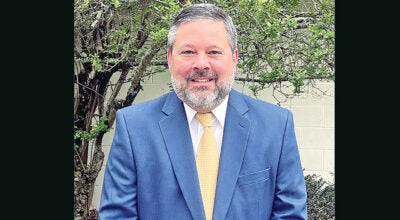OU cuts more positions: 149 staff members let go in a second round of layoffs
Published 8:46 am Wednesday, May 20, 2020
Ohio University continues to feel the crunch from a reduced budget due to the coronavirus pandemic and has laid off 149 staff members in a second round of layoffs on Friday.
Those cuts included seven positions at Ohio University Southern.
“The university has implemented efficiencies aligned with One OHIO strategy, which impacted some positions on the Southern campus,” said OU spokesperson Carly Leatherwood. “Specifically, in looking at program enrollments and leveraging shared resources across the institution, five instructional faculty positions and two administrative positions were eliminated.”
She added no degree programs will be eliminated based on Friday’s actions.
In an email on Friday, OU president M. Duane Nellis said 53 instructional faculty members had gotten a one-year notice of non-renewal and will have an ongoing appointment for the upcoming academic year and that 74 faculty members had enrolled in the Voluntary Separation or Retirement Program that was offered to tenured faculty earlier this year for a savings of more than $10.3M million in salary and benefits
“Additionally, we notified 149 administrators that their positions were being abolished. As part of University-wide realignment projects in communications and marketing and University Advancement, as well as departmental reorganizations, the University expects to rehire 55 administrators into new positions,” Nellis wrote. “As we move employees into newly-defined roles, we expect a net reduction of administrative positions of 94.”
Nellis said that the university has set up a committee to institute unpaid furlough days, which are expected to begin on the new fiscal year which starts on June 1. The move will save an estimated $13 million.
The measure applies to all administrative, faculty and classified non-bargaining employees as follows by pay bracket. Those making less than $38,000 will not have furlough days; it will be 10 days for those making $38,000–$64,999, 12 days for those making $65,000–$99,999, 14 days for those making $100,00–149,999, 16 days for those making $150,000–$199,999 and 18 days for those making more than $200,000.
Nellis and executive vice president and provost Elizabeth Sayrs have already taken a salary reduction of 15 percent and Nellis is asking members of President’s Council and Deans Council to take salary reductions of 10 percent or more for FY21.
“I can share that many vice presidents and deans as well as our athletic director have already committed to these reductions, and our head football coach and head men’s basketball coach will take voluntary salary reductions of 10 percent,” Nellis wrote.
He said the actions are “far-reaching, but I want to be upfront they will not be our final steps as we move toward the beginning of Fiscal Year 2021. Some colleges and divisions are continuing to work through reorganization plans that required additional time and study to ensure the right decisions are made for the future of the University.”
Nellis recognized that it was a difficult day for the colleagues that received notifications.
“Admittedly, it is an emotional day for us all. This simply is a very painful time during an unprecedented moment in our history as a community, a state, and a nation,” Nellis wrote. “However, as we continue to face difficult decisions, we have every reason to be hopeful for the future of Ohio University. Our University has weathered crises and storms in our 216-year history and become stronger, evermore ready to realize our mission, while increasing the value of an Ohio University experience for students. And we will do so now as we harness that unwavering strength and spirit to respond to the challenges before us.”
Sayrs said the latest layoffs were important steps, but were not enough to ensure the university’s financial stability.
She wrote that Ohio University was already anticipating using about $26M in reserves before June 30 and now they anticipate using $50–$55M in reserves in the same timeframe.
“If we do not change our spending, we will use an estimated $55M in reserves even before accounting for any enrollment changes due to the pandemic,” she wrote. “Before the pandemic, we faced significant but manageable challenges, but now we, along with the vast majority of colleges and universities in the United States, face dramatic deficits that we must address through a series of short-term, intermediate, and long-term measures.”
OU has already put in a hiring freeze, limits on spending and travel, a review of all in-progress capital projects and a suspension of new capital projects.
Approximately two weeks ago, nearly 190 positions in the University’s American Federation of State, County and Municipal Employees (AFSCME) were abolished, for a savings of approximately $11.3M.
“I want to affirm that today’s actions are not a reflection on our colleagues’ dedication, success, or important work with our students and our communities—far from it,” Sayrs wrote. “I recognize and am grateful for their many contributions, and I acknowledge the tremendous impact these difficult budget decisions will have on individual people, their families and friends, their academic unit, our students, and our larger communities.”
OU has set up a website, www.ohio.edu/budget, so that people can monitor the budget issue.





